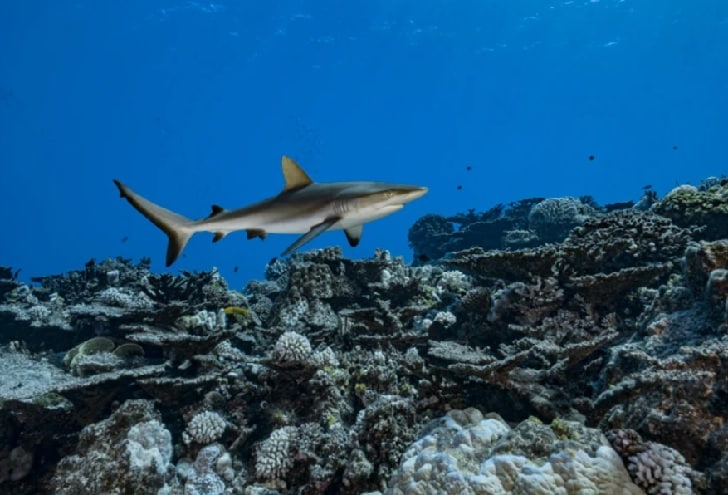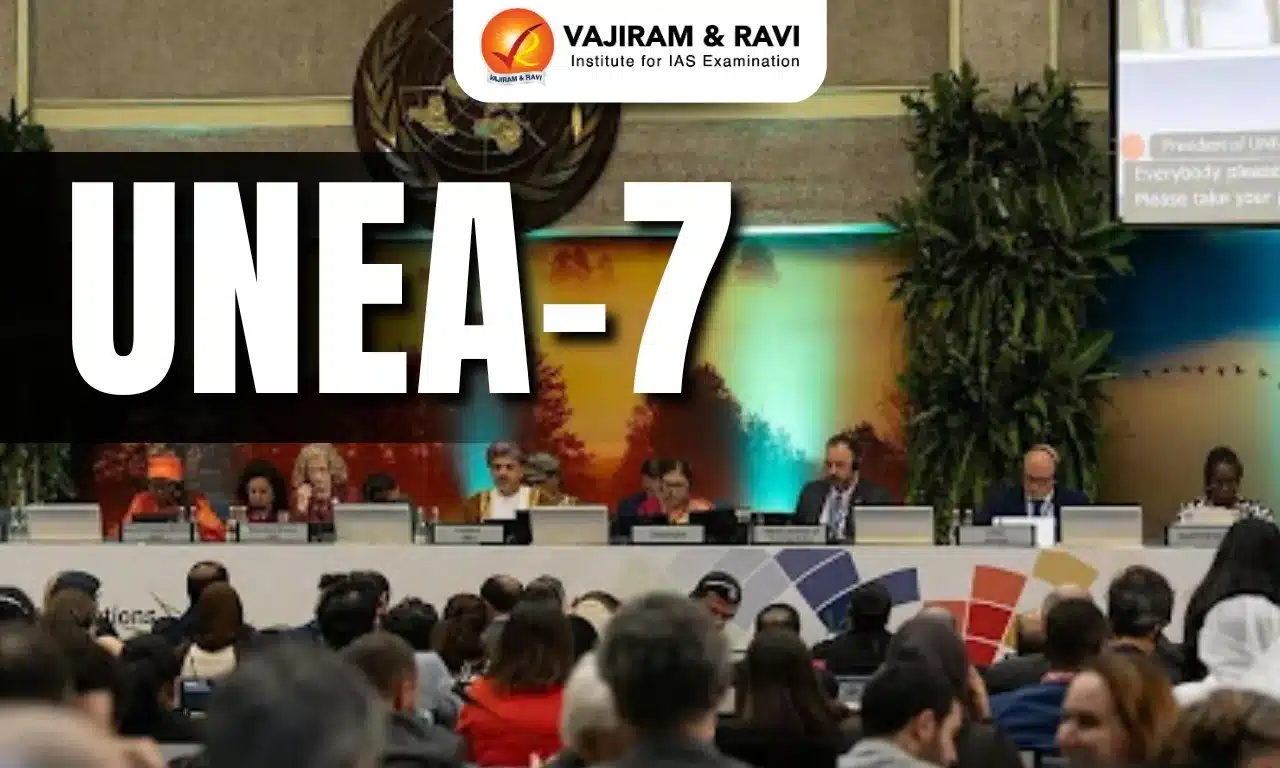What’s in today’s article?
- Why in news?
- News Summary: UN high seas treaty
- What is UN high seas treaty?
- What was the need for UN high seas treaty?
- What are the key provisions of the UN high seas treaty?
- What are the challenges for this treaty?
- Conclusion
Why in news?
- Recently, negotiators from almost every country in the world finalised a new global treaty meant for the conservation and sustainable use of biological resources in the high seas.
- In terms of its significance and impact, this treaty is being compared to the 2015 Paris Agreement on climate change.
News Summary: UN high seas treaty
What is UN high seas treaty?
- Agreed under the UN Convention on the Law of the Sea (UNCLOS), this treaty is commonly known as the agreement on biodiversity beyond national jurisdictions (BBNJ).
- this treaty is the first international law to offer some protection to the nearly two-thirds of the ocean that is beyond national control.
- The UNCLOS is an international treaty that establishes a framework for the use and management of the world’s oceans and their resources.
- It was adopted by the United Nations in 1982 and came into force in 1994.
- This treaty is meant for the conservation and sustainable use of biological resources in the high seas.
What was the need for UN high seas treaty?
- Ocean and biodiversity
- The high seas comprise 64 per cent of the ocean surface, and about 43 per cent of the Earth.
- These areas are home to about 2.2 million marine species and up to a trillion different kinds of microorganisms.
- Ocean and global climate
- Oceans are an integral part of the global climate cycle, and perform a range of ecological services including absorption of carbon dioxide and excess heat.
- Hence, this treaty is being considered as a landmark in the efforts to keep the planet habitable.
- Unregulated human activities
- Climate change is already influencing, and is being influenced by, ocean systems, and is exacerbating the pressures on marine biodiversity from unregulated human activities.
- It is these specific challenges — a combination of climate change, biodiversity, and pollution — that the High Seas Treaty seeks to address.
- UNCLOS and concerns regarding the biodiversity
- Though UNCLOS asks countries to protect the ocean ecology and conserve its resources, it does not provide the specific mechanisms or processes to do so.
- Hence, it is believed that the High Seas Treaty will work as an implementation agreement under the UNCLOS.
- This is similar to the Paris Agreement working under the UN Framework Convention on Climate Change (UNFCCC).
What are the key provisions of the UN high seas treaty?
- Demarcation of marine protected areas (MPAs)
- MPAs are where ocean systems, including biodiversity, are under stress, either due to human activities or climate change.
- These can be called the national parks or wildlife reserves of the oceans.
- Activities in these areas will be highly regulated, and conservation efforts similar to what happens in forest or wildlife zones, will be undertaken.
- Only about 1.44 per cent of high seas are currently protected, according to the International Union for Conservation of Nature (IUCN).
- In December 2022, at the meeting of the Convention on Biodiversity (CBD) in Montreal, Canada, countries had agreed to put at least 30 per cent of degraded coastal and marine ecosystems under effective restoration by 2030.
- MPAs will be helpful in achieving this objective.
- MPAs are where ocean systems, including biodiversity, are under stress, either due to human activities or climate change.
- Sustainable use of marine genetic resources and equitable sharing of benefits arising from them
- Genetic information from marine organisms is already being extracted, and their benefits are being investigated.
- The treaty seeks to ensure that any benefits arising out of such efforts, including monetary gains, are free from strong intellectual property rights controls, and are equitably shared amongst all.
- The knowledge generated from such expeditions are also supposed to remain openly accessible to all.
- Initiation of the practice of environmental impact assessments for all major activities in the oceans
- The high seas are international waters that are open for use by all countries.
- Under the new treaty, commercial or other activities that can have significant impact on the marine ecosystem would require an environmental impact assessment to be done.
- The results of this exercise have to be shared with the international community.
- Capacity building and technology transfer
- This will help small island states and landlocked nations, who do not have the resources or the expertise, to meaningfully participate in the conservation efforts.
What are the challenges for this treaty?
- The details of all the major contentious provisions are still to be worked out
- This includes provisions related to environmental impact assessments, sharing of benefits from genetic resources, and mobilisation of funds for conservation activities.
- Many issues remain unaddressed
- Many issues remain unaddressed, including the mechanisms for policing the protected areas, the fate of the projects that are assessed to be heavily polluting, and the resolution of disputes.
- Ratification is not expected to be easy
- The process of ratification is not expected to be easy.
- It took UNCLOS 12 years to become international law because the necessary number of ratifications was not reached.
- The treaty’s provisions do not overrule regulations laid down by the authorities that oversee existing high seas activities
- These include:
- the International Maritime Organization, which is responsible for shipping;
- the International Seabed Authority, which oversees deep-sea mining;
- 17 regional fisheries management organizations tasked with regulating fisheries in various parts of the ocean, including Antarctica.
- Military activities and existing fishing and commercial shipping are, in fact, exempt from the treaty.
- Hence, the treaty cannot create protected areas in places already covered by fishing agreements, even if that fishing is unsustainable and depleting stocks.
- These include:
Conclusion
- The high seas have long suffered exploitation due to commercial fishing and mining, as well as pollution from chemicals and plastics.
- The new agreement is about “acknowledging that the ocean is not a limitless resource, and it requires global cooperation to use the ocean sustainably.”
Q1) What is UNCLOS?
UNCLOS stands for the United Nations Convention on the Law of the Sea. It is an international treaty that sets out the legal framework for the use and management of the world’s oceans and their resources. The convention was adopted in 1982 and came into force in 1994 after it was ratified by 60 countries.
Q2) What are global commons?
Global commons refer to the Earth’s shared resources that are not owned or controlled by any single country or entity but are essential for the well-being of humanity and the planet. Examples of global commons include the atmosphere, oceans, outer space, and Antarctica.
Source: The High Seas Treaty: Key provisions, and the challenges it faces | Nature | Indian Express
Last updated on December, 2025
→ Check out the latest UPSC Syllabus 2026 here.
→ Join Vajiram & Ravi’s Interview Guidance Programme for expert help to crack your final UPSC stage.
→ UPSC Mains Result 2025 is now out.
→ UPSC Notification 2026 is scheduled to be released on January 14, 2026.
→ UPSC Calendar 2026 is released on 15th May, 2025.
→ The UPSC Vacancy 2025 were released 1129, out of which 979 were for UPSC CSE and remaining 150 are for UPSC IFoS.
→ UPSC Prelims 2026 will be conducted on 24th May, 2026 & UPSC Mains 2026 will be conducted on 21st August 2026.
→ The UPSC Selection Process is of 3 stages-Prelims, Mains and Interview.
→ UPSC Result 2024 is released with latest UPSC Marksheet 2024. Check Now!
→ UPSC Prelims Result 2025 is out now for the CSE held on 25 May 2025.
→ UPSC Toppers List 2024 is released now. Shakti Dubey is UPSC AIR 1 2024 Topper.
→ UPSC Prelims Question Paper 2025 and Unofficial Prelims Answer Key 2025 are available now.
→ UPSC Mains Question Paper 2025 is out for Essay, GS 1, 2, 3 & GS 4.
→ UPSC Mains Indian Language Question Paper 2025 is now out.
→ UPSC Mains Optional Question Paper 2025 is now out.
→ Also check Best IAS Coaching in Delhi

















